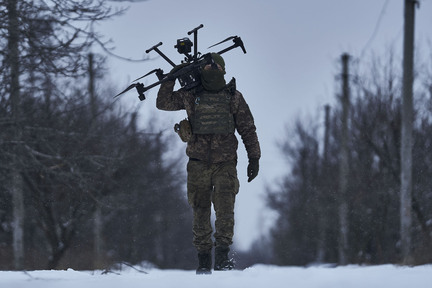On false hopes - Andrew Cockburn in LRB:
“Using comparatively primitive technology, the Houthis have disrupted a significant component of the global economy.
The word ‘disruptive’ crops up a lot in Andrew Krepinevich’s exhaustive treatise on military innovation. His contention is that the adoption of innovative military technology ahead of rivals leads to victory. In support of his argument he delves into areas usually frequented only by specialists. Among them are the Fisher Revolution, which involved an initiative to build up-to-date warships for the Royal Navy in the years preceding the First World War; the evolution of Blitzkrieg in the German army between the world wars; and the development of aircraft carrier tactics by the US navy, beginning in the 1920s. In each case he cites the advent of new or improved technology, such as long-range torpedoes in the British example, or fast Panzer units adopted by the Germans before the Second World War. He finds room to highlight the role played by leaders, such as the dynamic Admiral Jackie Fisher, sponsor of the ‘dreadnought revolution’; Generals Hans von Seeckt and Heinz Guderian in the creation of Hitler’s Wehrmacht; and assorted interwar US naval leaders. But it is his evident belief that technology proved the decisive factor.”
(…)
“The stage was set for what became the standard US approach to warfare: aerial precision strikes against air defences and ‘high-value’ targets, as deployed in the Kosovo war of 1999, the Afghan and Iraq invasions at the beginning of the 21st century, and subsequent conflicts up to and including current engagements in Iraq, Syria and Yemen.
All these operations have relied on the presumed ability of aerial bombardment not only to disable an enemy’s defences but also, in Krepinevich’s words, ‘to identify a relatively small number of targets that, when successfully engaged (or engaged on a recurring basis), lead to the crippling of an enemy’s military effectiveness or capacity to resist’.”
(…)
“When considering the German army that brought most of Europe under Hitler’s control in the early years of the Second World War, Krepinevich pays due tribute to the military leaders who foresaw that the static and bloody attrition of the previous world war could be avoided by focusing on mobility and manoeuvre. Accordingly, they invested in fast-moving tank formations as well as an air force primarily dedicated to working in conjunction with ground troops. Though acknowledging the conceptual insights of generals like von Seeckt and Guderian, Krepinevich is happiest when dwelling on the technology they utilised, especially relatively speedy mechanised forces. But the real secret of German success lay in the encouragement and facilitation of initiative by lower-level commanders on the front line, who were free to devise the best means of accomplishing their mission without the interference of superiors. Aided by Guderian’s insistence on putting a radio in every tank, they were able to adapt to and exploit changing circumstances on the battlefield, faster than equally well armed but rigidly controlled opponents could respond. Hermann Balck, one of the most successful Panzer generals, later observed that ‘the German higher commander rarely or never reproached their subordinates unless they made a terrible blunder.”
(…)
“The F-117 ‘stealth’ bomber, for example, purportedly invisible to radar, had often required the company of a host of escorting planes to jam enemy detection systems that supposedly could not see the bomber anyway. Far from ‘one target one bomb’, as claimed by exultant laser-guided bomb manufacturers, the F-117 used an average of four, and sometimes ten, of the most accurate weapons to destroy a target. Overall, the investigators concluded, ‘many of [the Pentagon’s] and manufacturers’ postwar claims about weapon system performance ... were overstated, misleading, inconsistent with the best available data, or unverifiable.’”
(…)
“The US military is heavily involved in ongoing conflicts – either by proxy, as in Ukraine, or directly, as in the Middle East. To date, the results have shed a poor light on the military-technological revolution. Successive ‘game-changing’ systems dispatched to Ukraine, notably the High Mobility Artillery Rocket System (designed to hit targets with great precision at long range), have failed to produce victory while eliciting effective countermeasures on the part of the Russians. Artillery has dominated the battlefield, consuming massive quantities of shells which in the West are in short supply thanks to the prevailing preference for the production of more exotic weapons. Drones, it’s true, have brought major changes to the battlefield, but the machines that have had the most striking impact are cheap ones originally designed for the consumer market and adapted in the field for lethal purposes by front-line troops – conceptually similar to the jerry-rigged explosive devices that caused havoc to Western armies in Iraq and Afghanistan.”
Read the article here.
AI might change the world, but it will be a while before it will change the battlefield.
Interesting that the Wehrmacht gave so much space for individual initiatives, this goes very much against the Prussian idea of strict obedience, the whole concept of Befehl ist Befehl.
Drones designed for consumer markets changed the battlefield. The next question is: when will the drone become the weapon of choice of terrorists or those labeled as terrorist?
